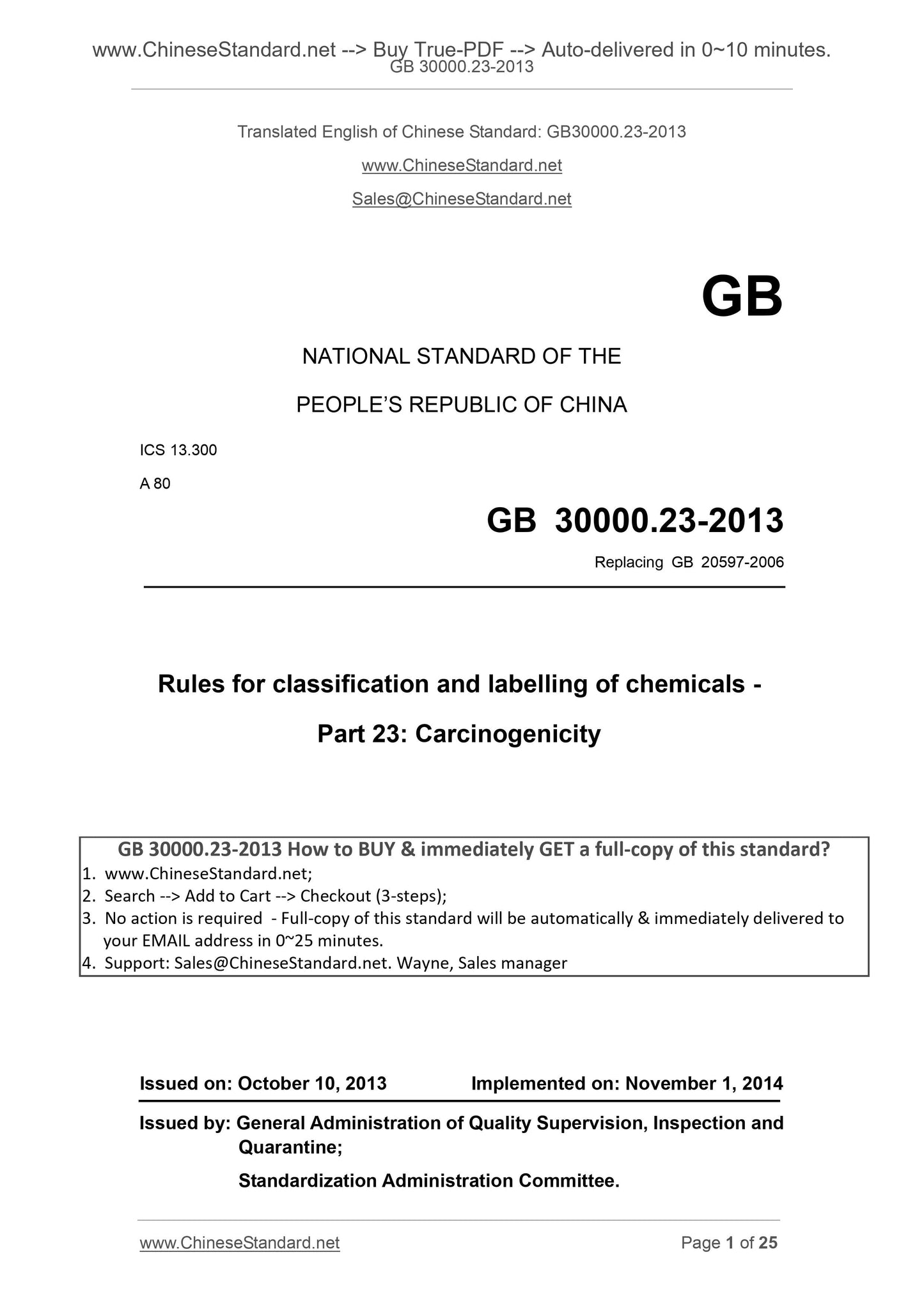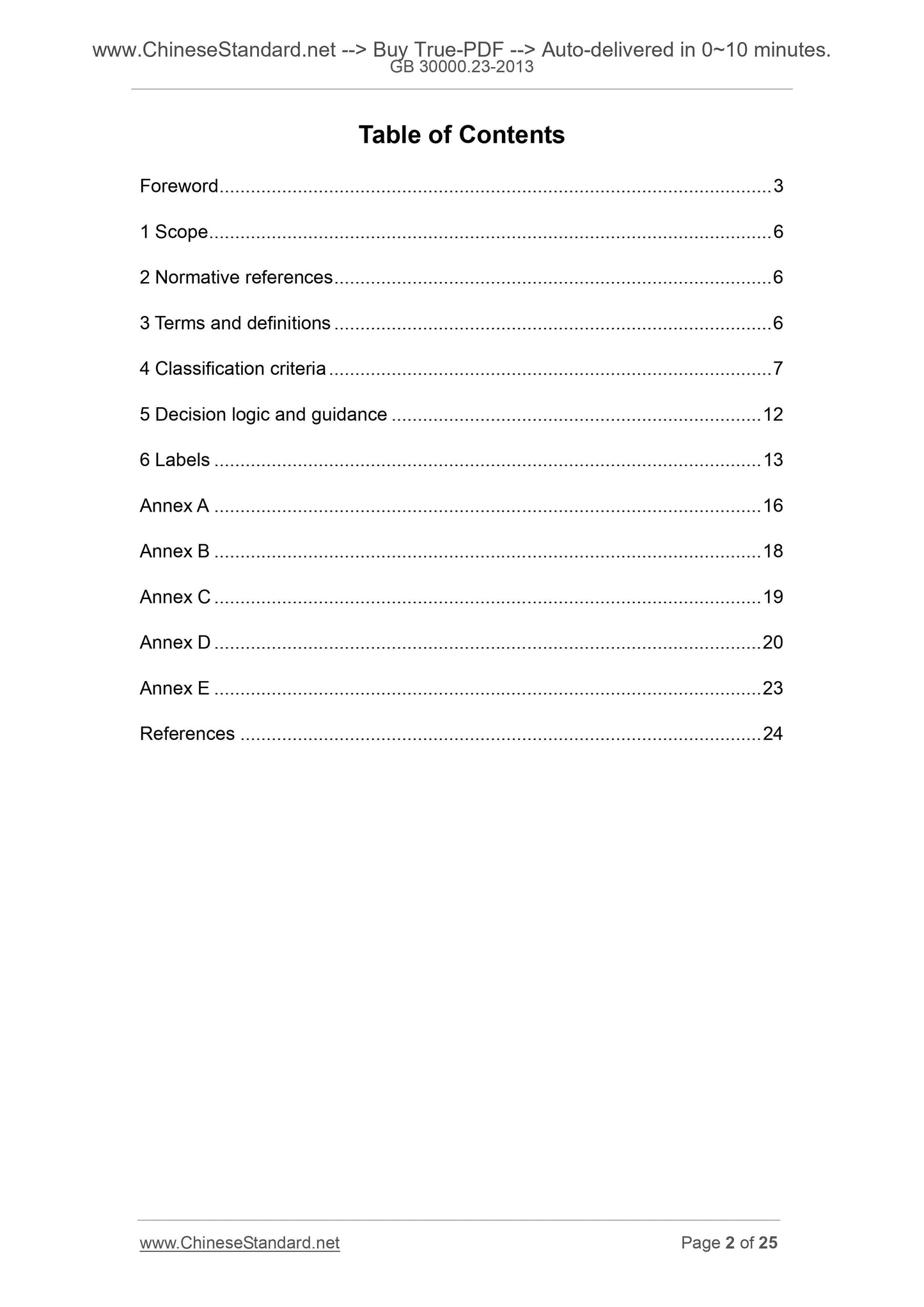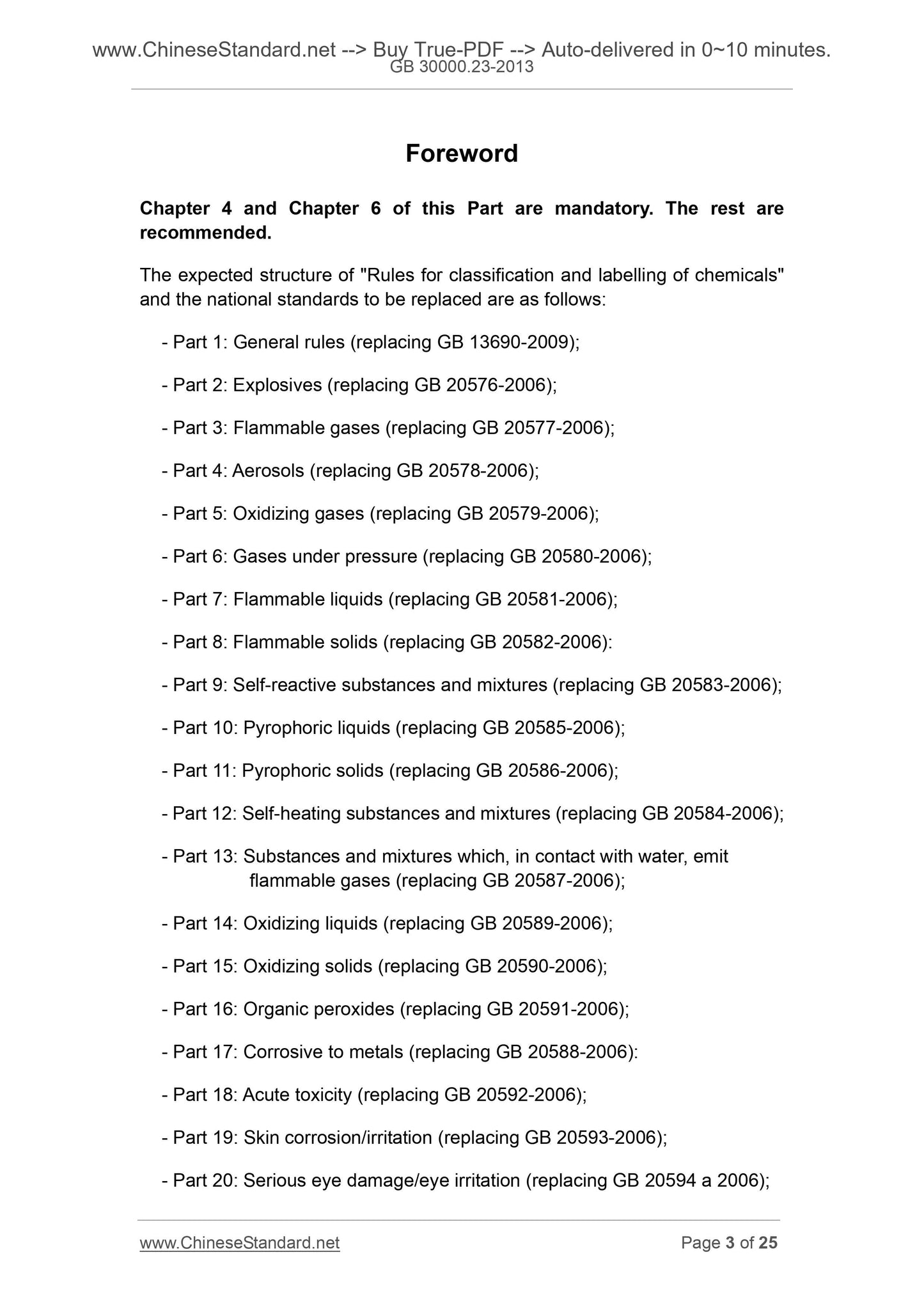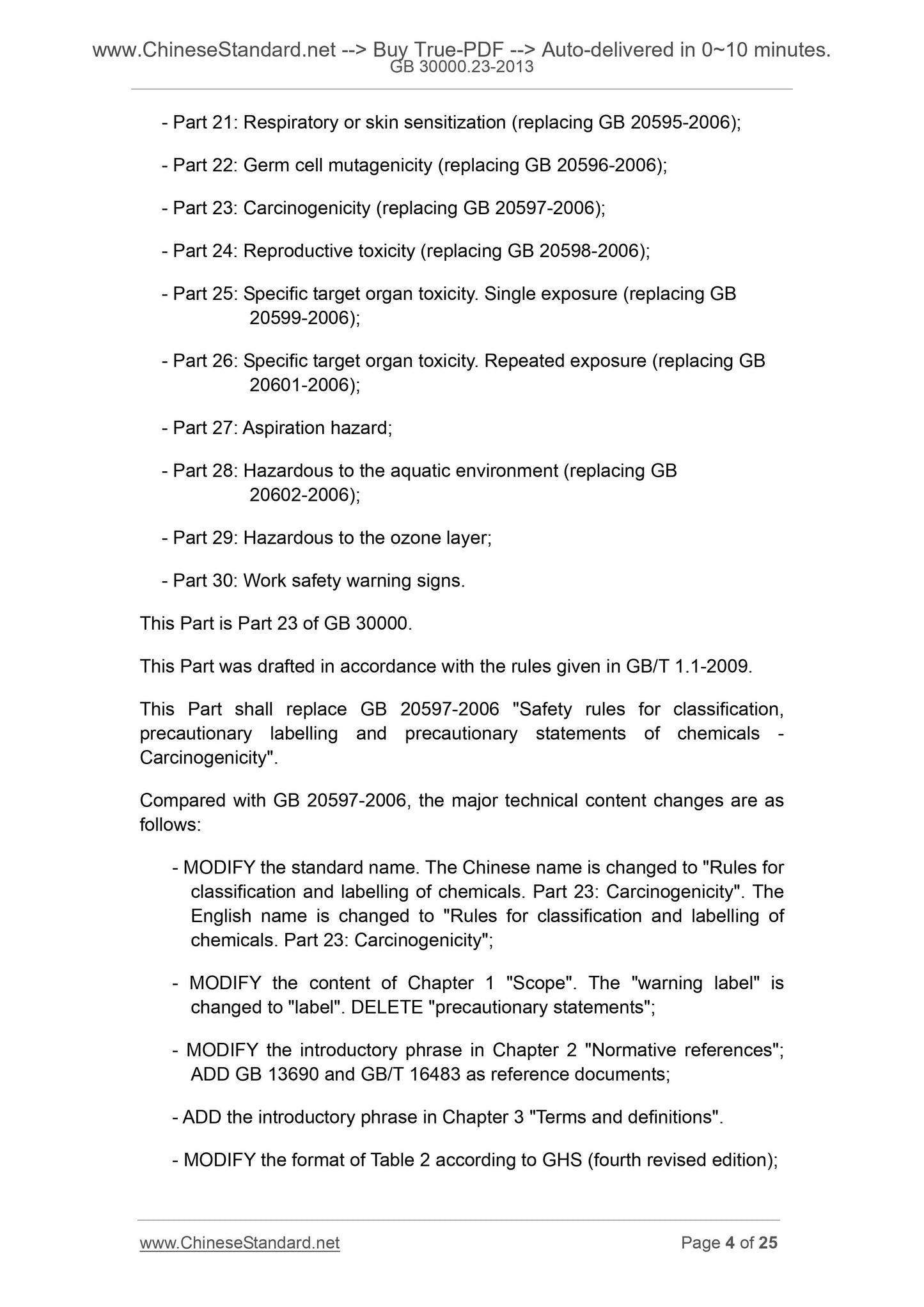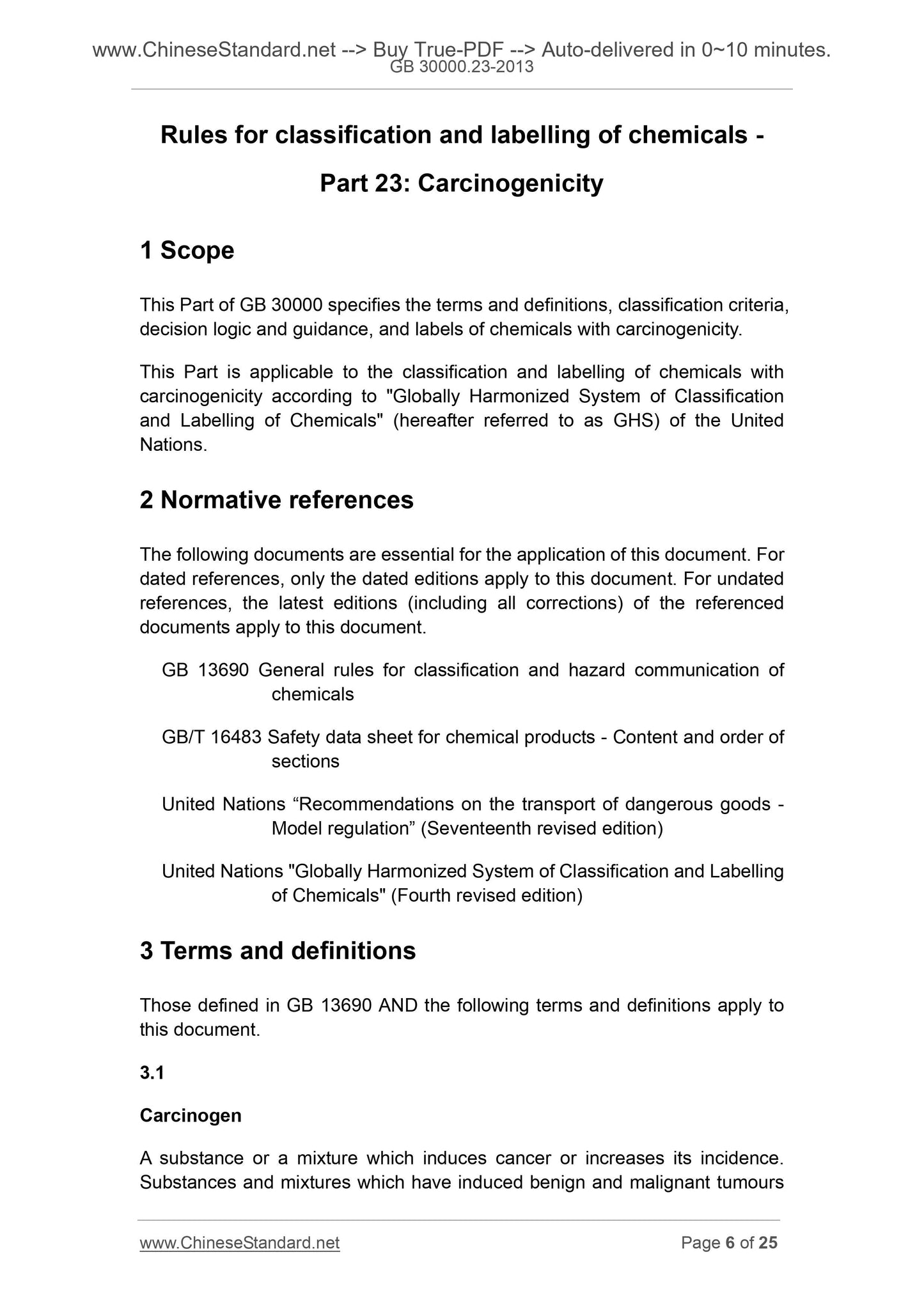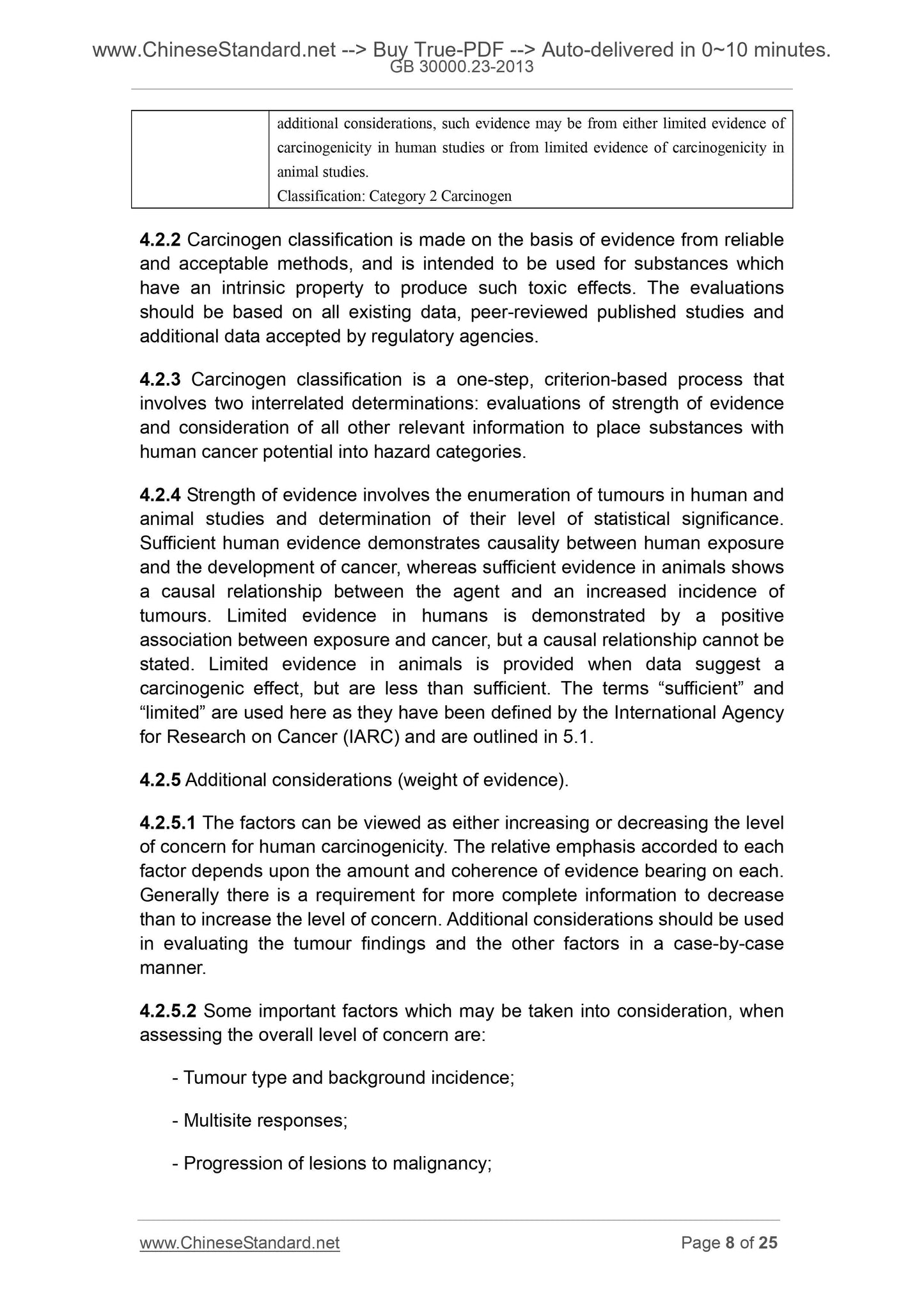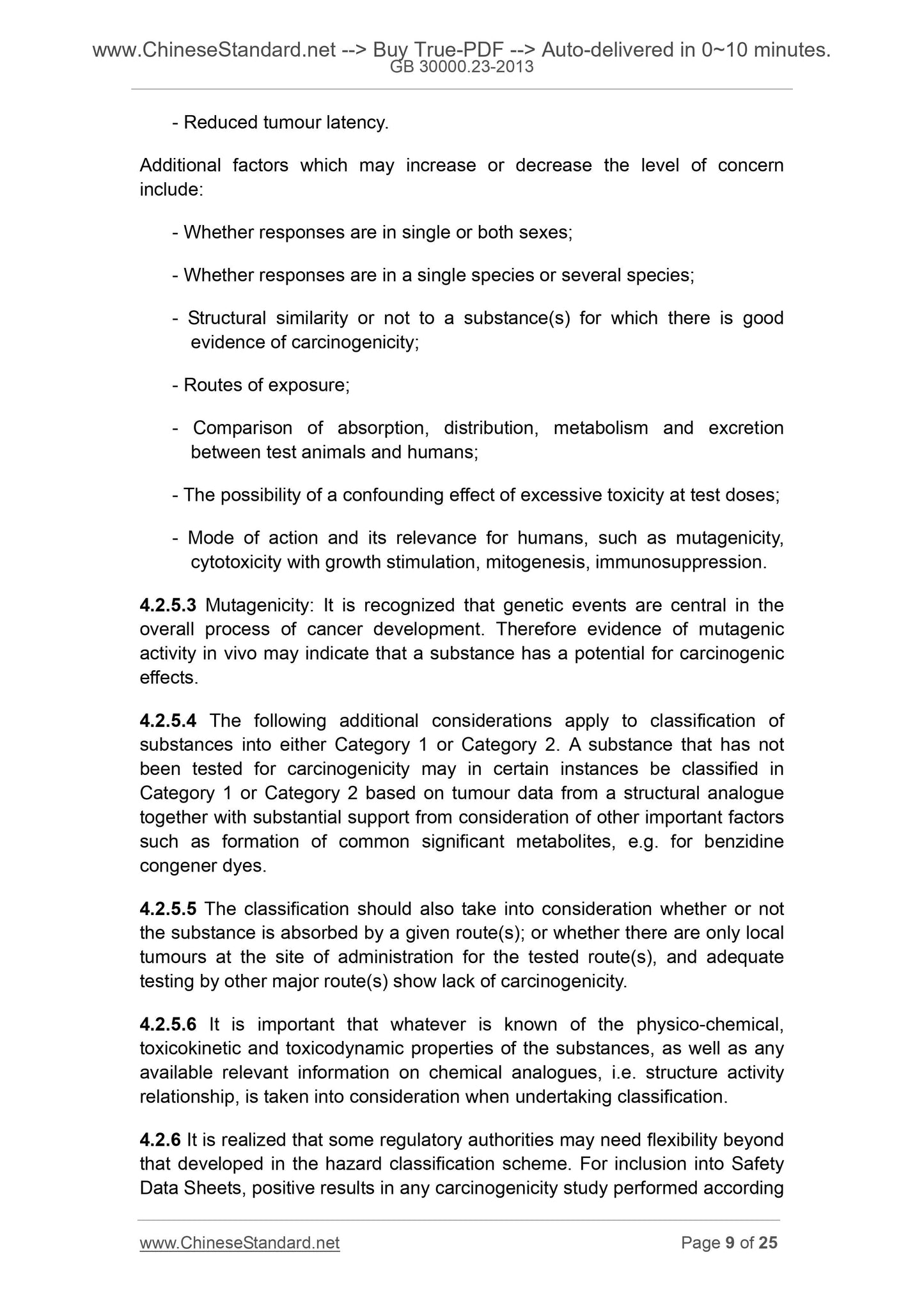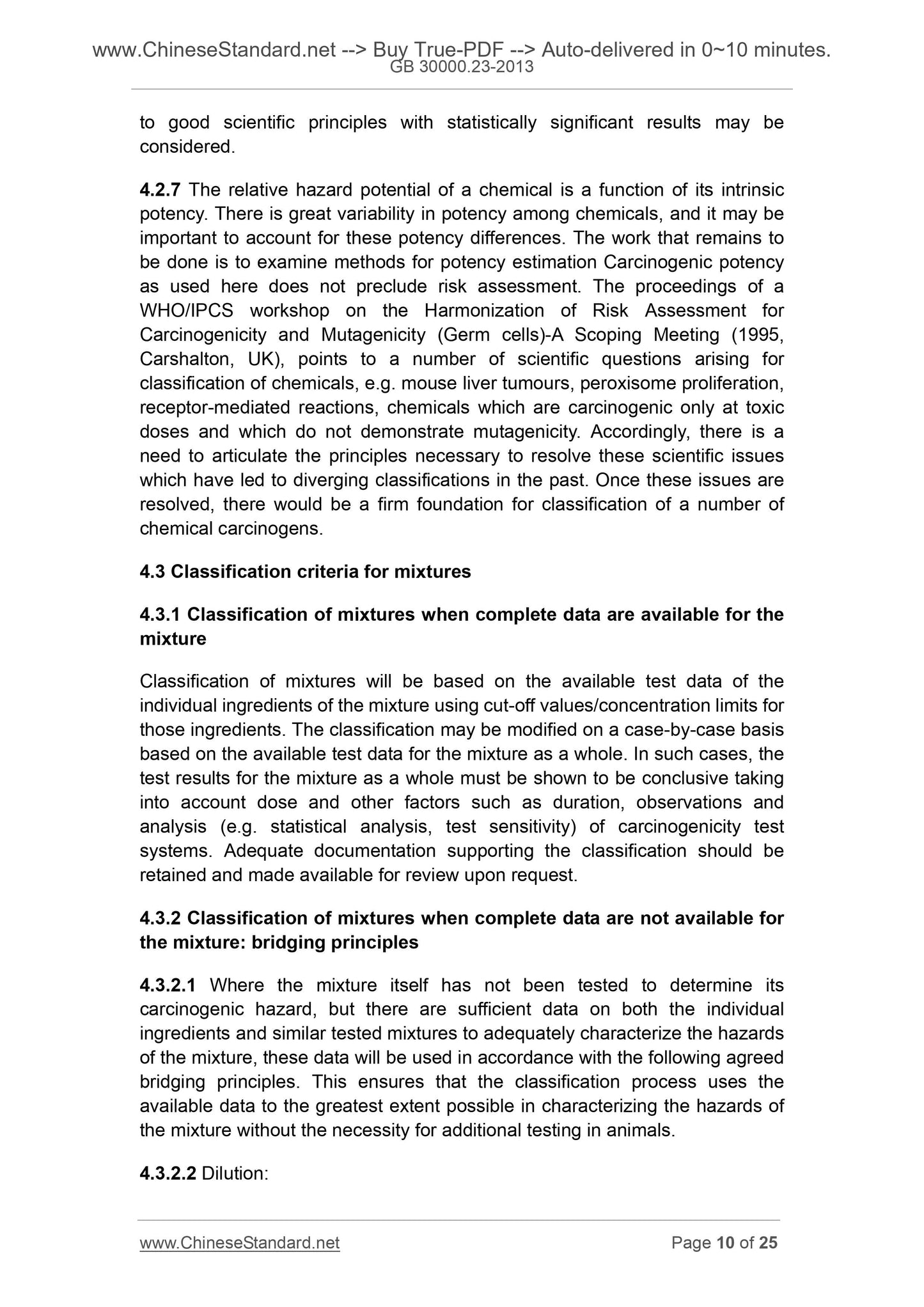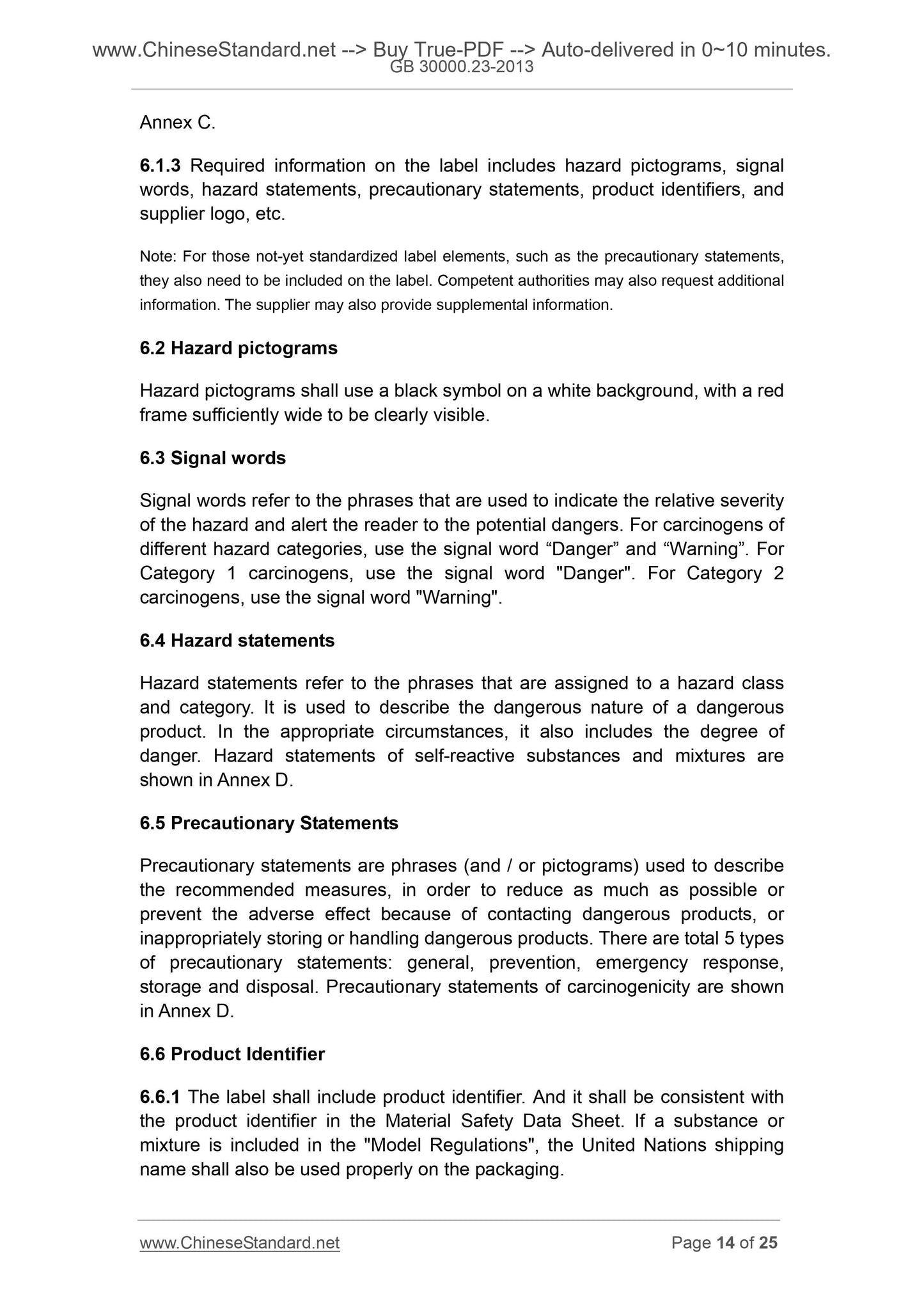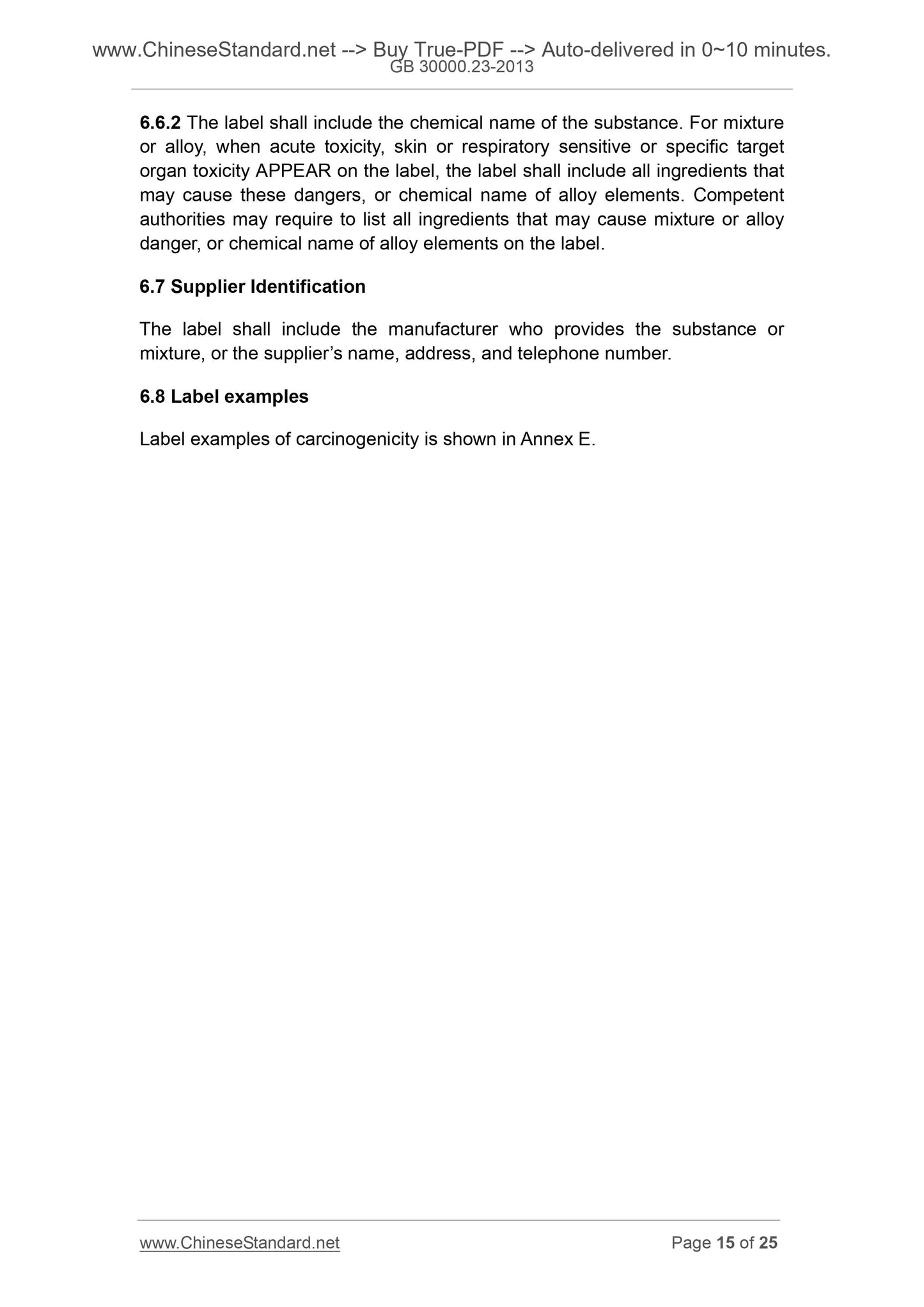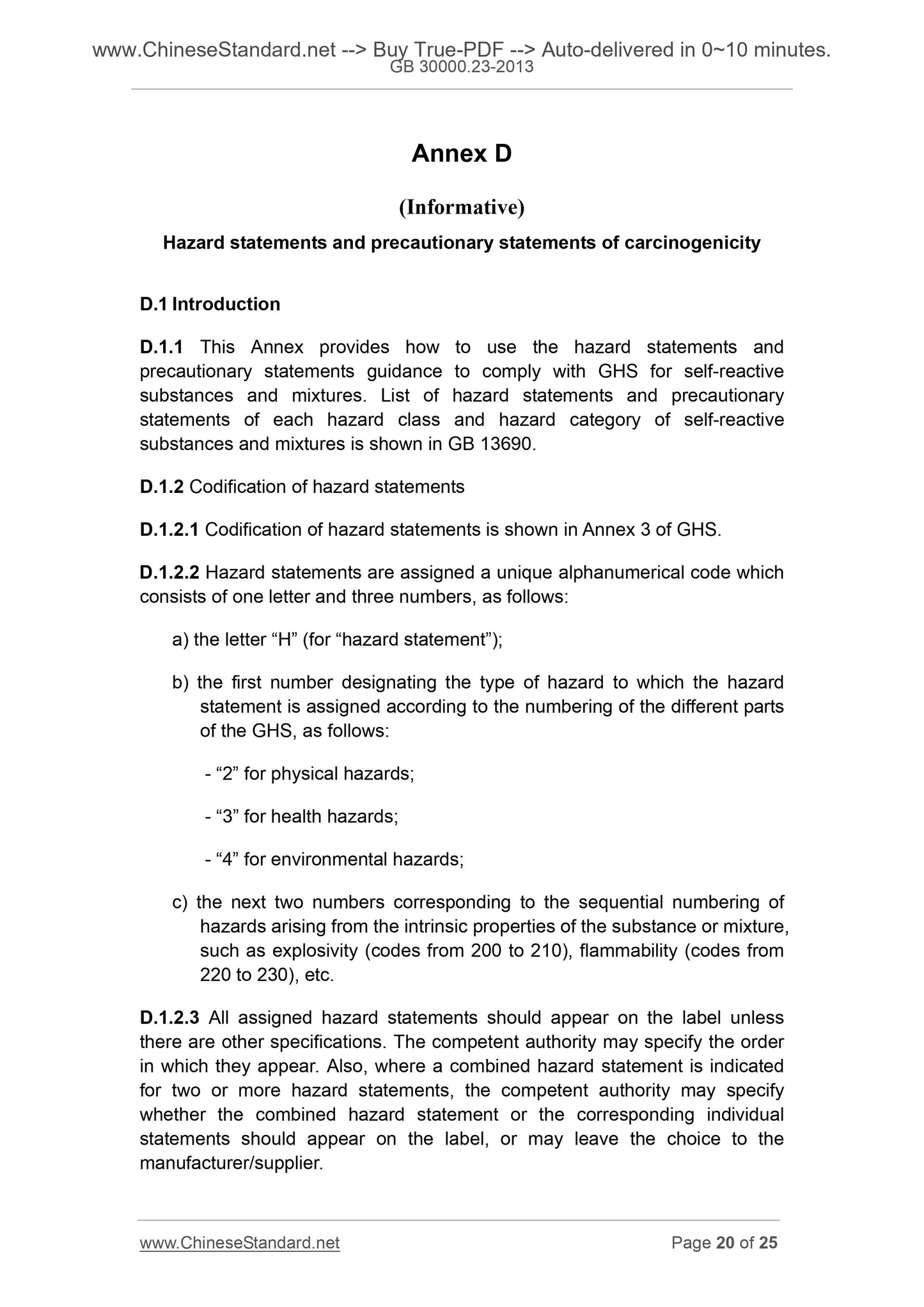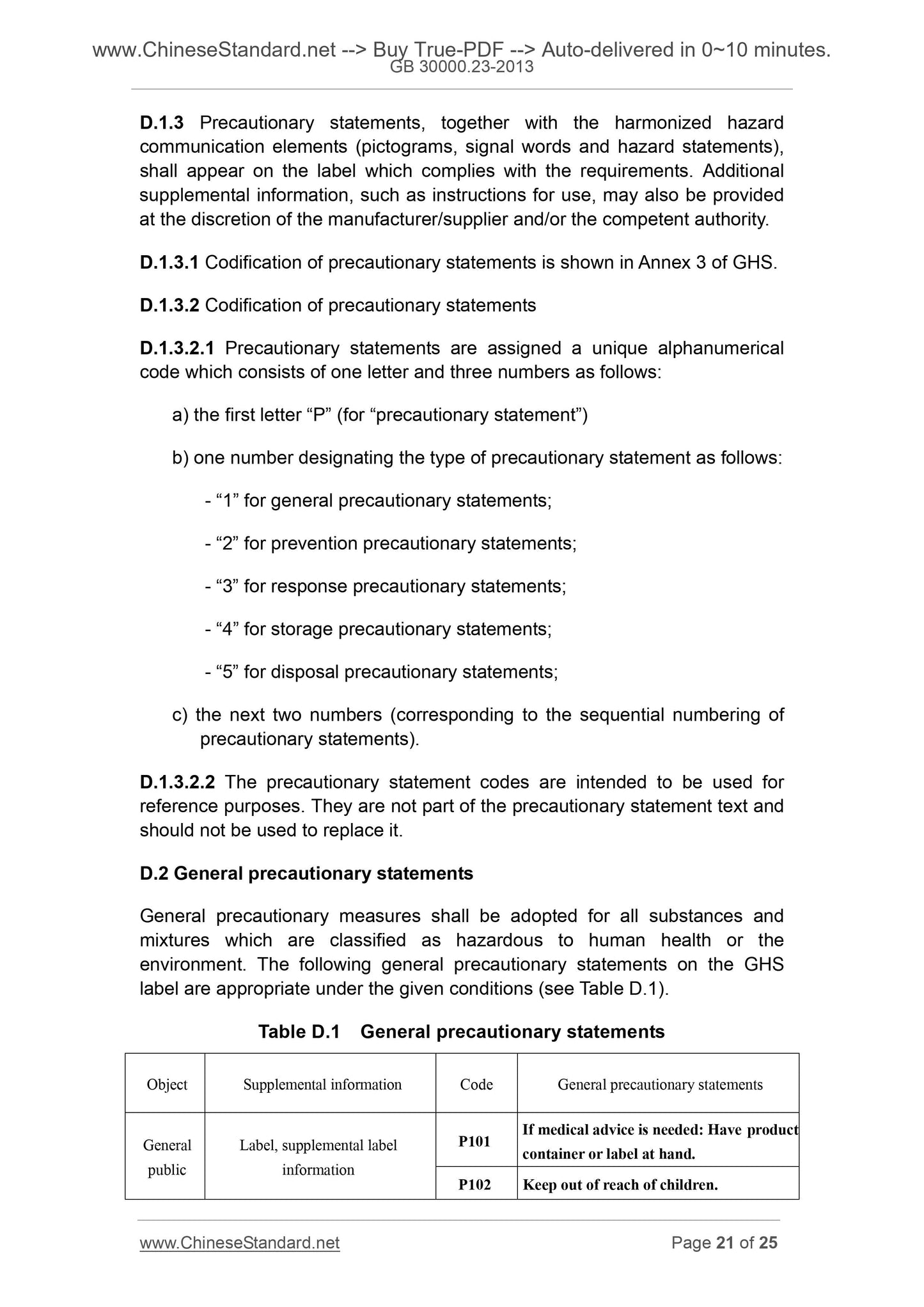1
/
of
12
www.ChineseStandard.us -- Field Test Asia Pte. Ltd.
GB 30000.23-2013 English PDF
GB 30000.23-2013 English PDF
Regular price
$125.00
Regular price
Sale price
$125.00
Unit price
/
per
Shipping calculated at checkout.
Couldn't load pickup availability
GB 30000.23-2013: Rules for classification and labelling of chemical - Part 23: Carcinogenicity
Delivery: 9 seconds. Download (and Email) true-PDF + Invoice.Get Quotation: Click GB 30000.23-2013 (Self-service in 1-minute)
Newer / historical versions: GB 30000.23-2013
Preview True-PDF
Scope
This Part of GB 30000 specifies the terms and definitions, classification criteria,decision logic and guidance, and labels of chemicals with carcinogenicity.
This Part is applicable to the classification and labelling of chemicals with
carcinogenicity according to "Globally Harmonized System of Classification
and Labelling of Chemicals" (hereafter referred to as GHS) of the United
Nations.
Basic Data
| Standard ID | GB 30000.23-2013 (GB30000.23-2013) |
| Description (Translated English) | Rules for classification and labelling of chemical - Part 23: Carcinogenicity |
| Sector / Industry | National Standard |
| Classification of Chinese Standard | A80 |
| Classification of International Standard | 13.300 |
| Word Count Estimation | 18,111 |
| Older Standard (superseded by this standard) | GB 20597-2006 |
| Quoted Standard | GB 13690; GB/T 16483; United Nations ' Recommendations on the Transport of Dangerous Goods Model Regulations " (seventeenth revised edition); United Nations ' Globally Harmonized System of Classification and Labelling " (fourth revised edition) |
| Regulation (derived from) | National Standards Bulletin No. 21 of 2013 |
| Issuing agency(ies) | General Administration of Quality Supervision, Inspection and Quarantine of the People's Republic of China, Standardization Administration of the People's Republic of China |
| Summary | This standard specifies: carcinogenic Chemicals terms and definitions, classification criteria, decision logic and guidance labels. This standard applies to: carcinogenic chemicals by the United Nations ��Globally Harmonized System of Classification and La |
Share
